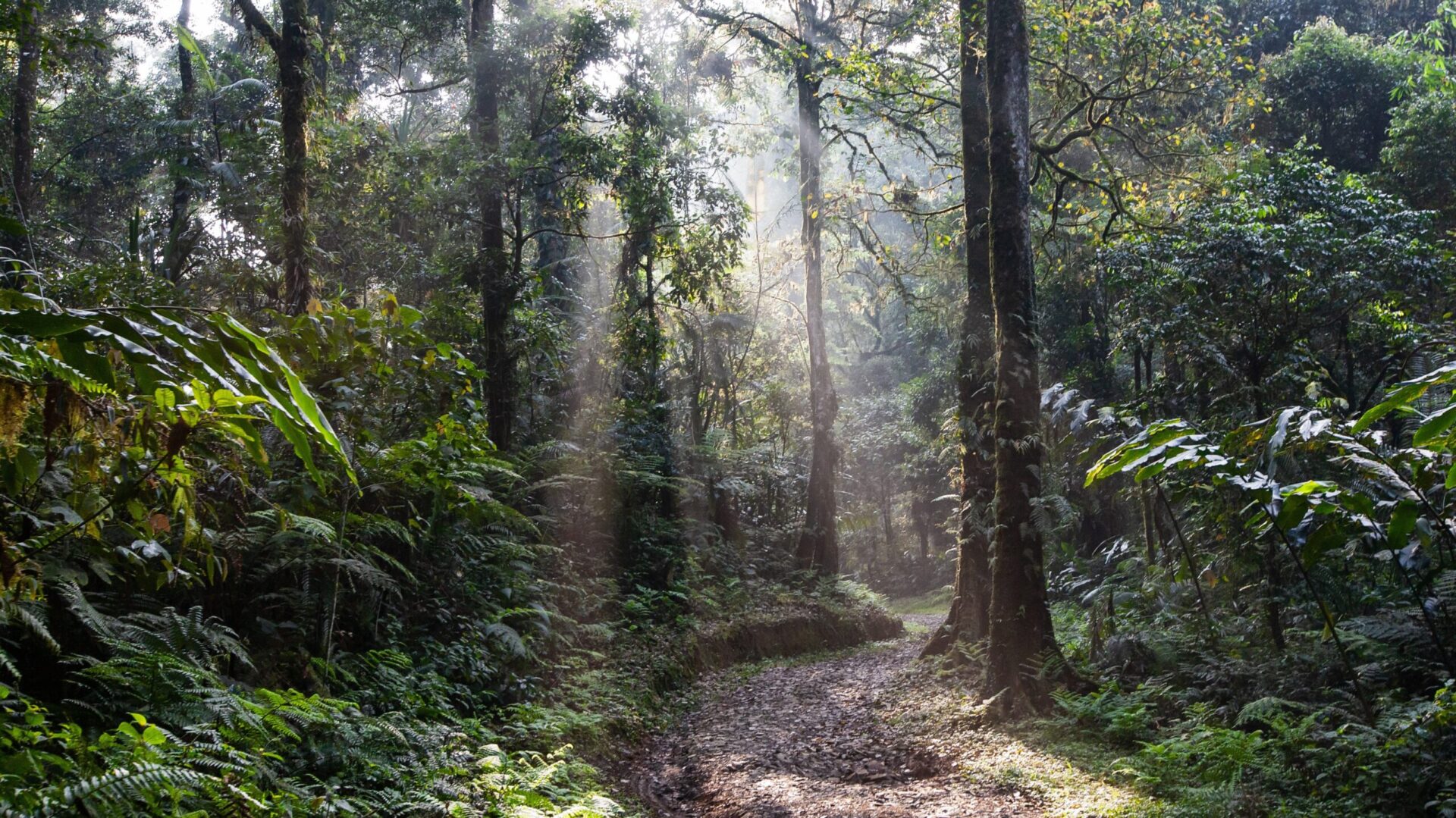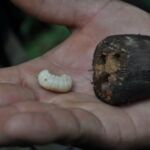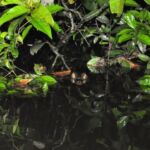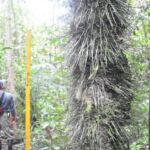
While many of the characteristics of the plants in Untouched may be fictional, each one is based off of real species. When I began writing, I used photographs from my trips to the Tamshiyacu-Tahuayo Reserve as inspiration. I wanted to put together a gallery of plants and animals (and their chapters) so that everyone could get a little taste of the experience.
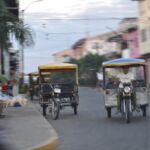
Motocars are a staple in Iquitos, the city where we are first introduced to the characters. I used a motocar to get everywhere within Iquitos and wanted to make sure I included them within the book.
Mentioned in chapter 1
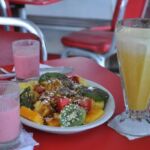
This one of my favorite memories when visiting Iquitos. I mention Ari's Burger and the delicious fresh juices...I wish I could have it on-demand.
Mentioned in chapter 1
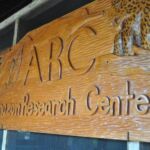
This is the sign to the front of the Amazon Research Center, owned by Amazonia Expeditions, the ecotourism company I went through on my trips. The "hub" of the research team and also the last home base until traveling deep into the reserve.
Mentioned in chapter 3
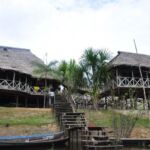
The Amazon Research Center, and hub of the characters as they begin their journey into the jungle.
First mentioned in chapter 3
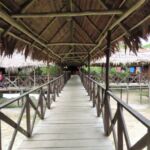
The lodge buildings are connected via raised, planked walkways. It not only provides safety during heavy flooding during the wet season, but provides great access to some arboreal wildlife visitors.
First mentioned in chapter 3
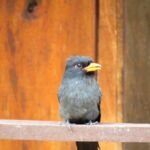
A black-fronted nunbird (Monasa nigrifrons), arguably one of the most striking birds I came across. They were present at the Amazon Research Center lodge walkways, always flitting about.
Mentioned in chapter 3
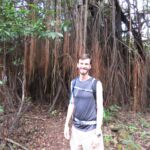
My husband standing in front of the main visual inspiration behind the red/orange vines mentioned throughout the book. In truth, they are not vines, but aerial ficus roots.
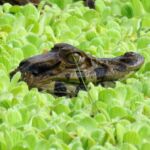
This is a juvenile spectacled caiman in a pod of water plants that we ran into just outside of the research center. His larger family members lurked nearby, but I couldn't resist taking his picture. Caiman are mentioned in chapters 3 and
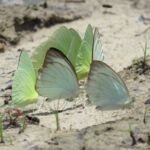
A group of butterflies (Anteos menippe) congregating on the shoreline feeding on the minerals leeched into the sand and soil.
Mentioned in chapter 14
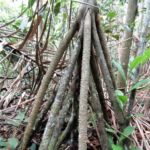
A full image of the thorn-covered stilted roots ("legs") of the walking palm (Socratea exorrhiza).
Mentioned first in chapter 8
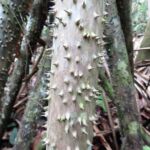
The thorn-covered stilted roots ("legs") of the walking palm (Socratea exorrhiza).
Mentioned first in chapter 8
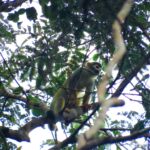
A member of a squirrel monkey troop we tracked throughout the canopy. They had a long brown capuchin with them, but he was too sneaky to be photographed.
Mentioned in chapter 6
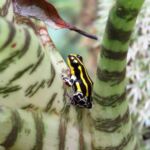
A yellow-banded poison dart frog (Dendrobates leucomelas) nesting in the heart of a bromeliad.
Mentioned in chapter 4
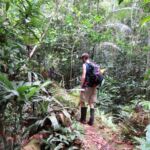
My husband trekking down one of the cleared paths around the Amazon Research Center.
First mentioned in chapter 3
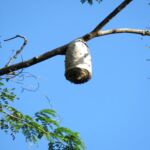
The nest/hive of a colony of paper wasps (Polistes family) high in the canopy. These were dotted along our hikes as well, but we mainly saw them as we boated along the river.
Mentioned in chapter 15
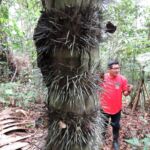
The trunk of a spiky palm tree (Bactris riparia) and the staff biologist of the Amazon Research Center, Andy Bicerra.
First mentioned in chapter 10
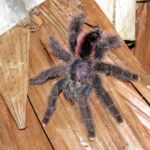
A pink-toed tarantula (Avicularia avicularia), the most common species of tarantula that I saw, resting on the trunk of a palm tree outside my room.
Mentioned in chapter 6
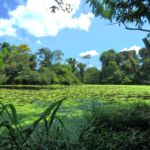
One of the small lakes we came across while hiking. I used this picture to describe a few instances of coming across bodies of water throughout the book.
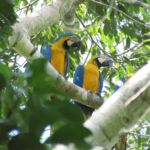
One of the several groupings of blue-and-gold macaws (Ara ararauna) seen while hiking. On one of our hikes out to a pond, there were macaws every few feet congregating on the branches.
First mentioned in chapter 4
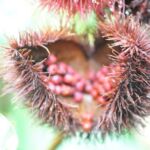
A seed pod from the achiote shrub (Bixa orellana). The seeds are used to make annatto, a condiment.
Mentioned in chapter 22
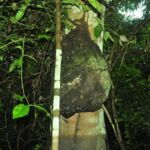
A termite nest built onto the trunk of a tree. Most of the trees had some level of termite nesting. Some were as large as a watermelon and others as small as a volleyball.
Mentioned in chapter 22
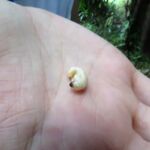
A coconut grub (Rhynchophorus palmarum), also known as the South American palm weevil, or Suri. They are tasty and often skewered, fried, or eaten raw as a quick, protein-rich snack.
First mentioned in chapter 3
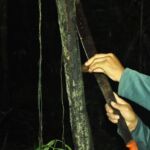
My guide showing me how to extract the cocotero from the palm nut with a machete.
Mentioned in chapter 3
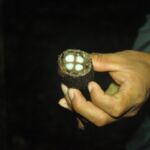
The interior of a palm nut, cut open, and displaying four grubs inside. These grubs, often called cocotero are a type of weevil that bore into the palm nuts (see previous photo of grub).
First mentioned in chapter 3
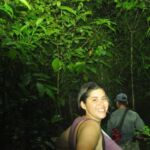
I liked this photo because it was taken in the highest part of the day while hiking. It was the best example of how dark it can be underneath the dense canopy. Even during the day, it can feel like dusk. I tried to get this feeling across throughout the book.
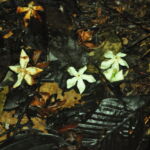
While most of the rainforest is shades of green and brown, there were a few places where pops of color shined through. In this case, there was a section along one of the hikes where the ground was littered with white petals. It was such a stark contrast to the dark and wet leaves.
Mentioned in chapter 22
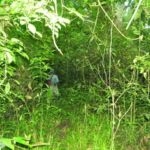
A picture from one of my hikes, again during the day with the shadow of the canopy making it appear as dark as dusk. There are many different ecosystems within the reserve, and this happened to be one of the lusher ones.
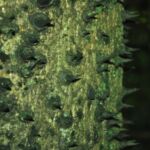
A sandbox tree (Hura crepitans) and its thorns. These tree contains a highly toxic sap that is often used for poison darts for hunting and fishing.
Mentioned in chapter 18
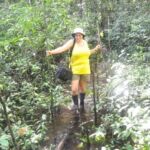
Much of the area surrounding the Amazon Research Center is Igapo ecosystem - wet, and swampy, and murky. Oftentimes you need to cross on fallen branches or wade through the water to get to your next destination.
First mentioned in chapter 4
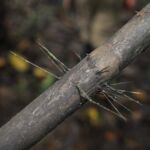
The long, thin spines on an unknown species of bamboo. It seems as though even those most traditionally benign plants had thorns or spines attached.
First mentioned in chapter 4
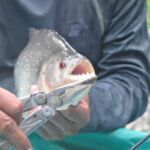
This was one of the piranha I caught while fishing a bit. While piranha are plentiful in the Amazon and its tributaries, it is still safe to swim and spend time in the water.
First mentioned in chapter 3
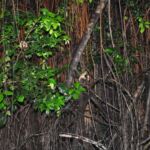
This is a photo I snapped of a tree frog, though he's barely visible. I liked this because you could see the orange aerial roots, prominent throughout both the rainforest and Untouched.
First mentioned in chapter 4
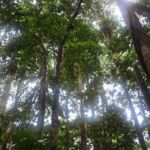
A picture of one of the least dense areas I traveled through while hiking. I thought it was so beautiful how the light gleaned through the leaves and branches. I wanted to use it as a description throughout their travels as a slight reprieve from the all-encompassing canopy.
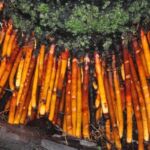
The aerial roots of a palm (Euterpe precatoria). There are similar roots, which belong to a Wasai tree and are used for medicinal purposes. It was while looking up some of my photos that I got the idea of introducing botanical pharmacology to the story.
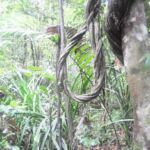
While I don't know this species, this looks somewhat similar to an ayahuasca vine, a vine used by shamans and mixed with other plants to make an hallucinogenic tea.
Mentioned in chapter 14
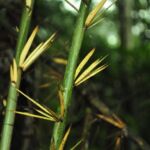
While this looks like bamboo, it is actually a species of palm (Astrocaryum chambira). I did stretch facts and used this as inspiration for the spiny bamboo, which causes lots of trouble throughout Untouched.
Mentioned in chapter 6
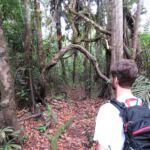
My husband standing at the entrance to one of the trails leading into the jungle. I used this picture to help describe the different kinds of sights the characters may encounter.
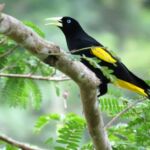
A noisy, but gorgeous bird, the yellow-rumped cacique (Cacicus cela). There was a whole nesting population outside of my cabin at the Amazon Research Center. I wrote a few pieces of this book while sitting and staring at them flit from branch to branch.
Mentioned in chapter 3
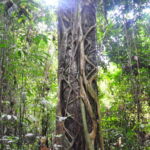
This is a relatively new growth of strangler fig, a type of parasitic epiphyte that often goes by the name of "tree killer." It starts as a seed dropped high in the canopy and survives purely on oxygen (epiphyte) until it can find a crack in a tree and germinate. Once it does so, it grows around the host tree and strangles it to death. It is able to survive long after the tree is dead. The idea of the strangler vine (I am closely familiarized with a strain in Florida) seemed an apt metaphor for the foreboding and danger the characters would experience at the start of their journey.
First mentioned in chapter 5
